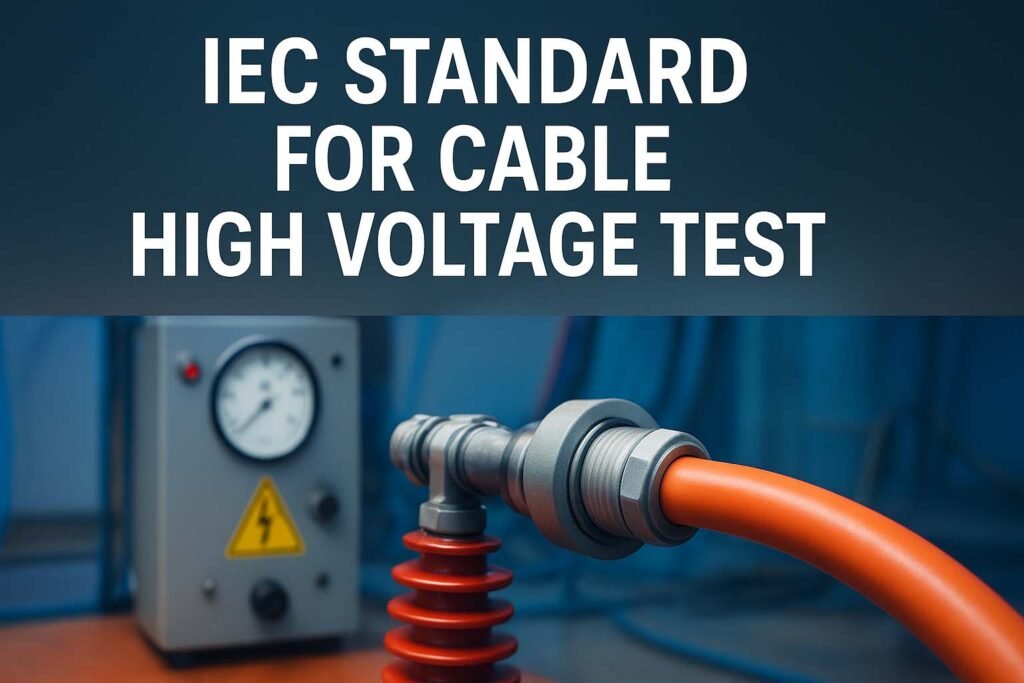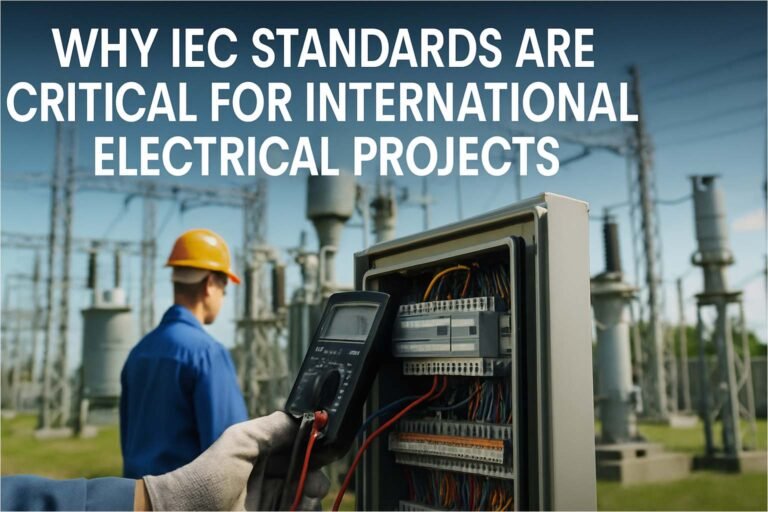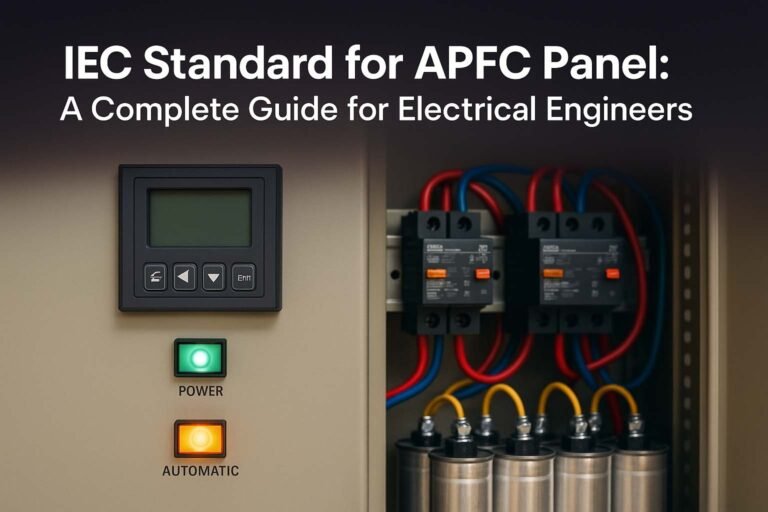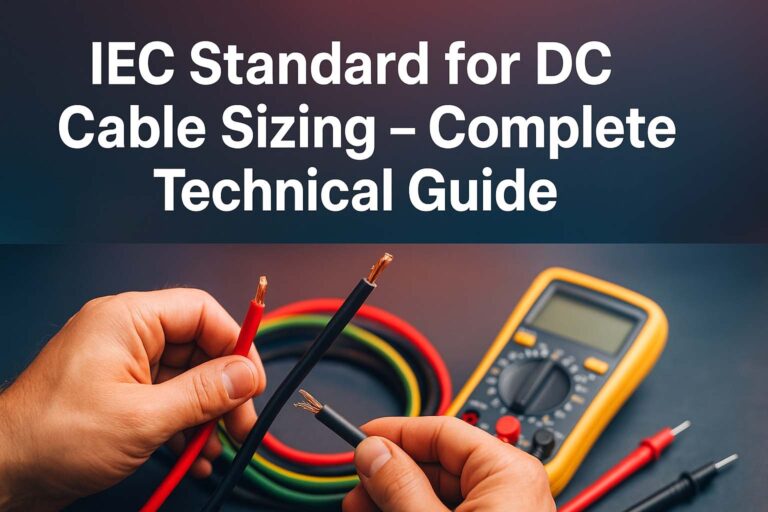IEC Standard for Cable High Voltage Test: Best Guide
High voltage cables are critical components in modern power transmission and distribution networks. They carry electricity safely over long distances and ensure reliable supply to industries, cities, and infrastructure. Because of their importance, these cables undergo strict quality checks before being used in service. One of the most important quality checks is the high voltage test. This test verifies that the cable insulation and construction can withstand high stress conditions without failure. The IEC standard for cable high voltage test provides clear guidance on how these tests must be performed. It ensures safety, reliability, and consistency across manufacturers and utilities.
The International Electrotechnical Commission (IEC) develops globally accepted standards for electrical equipment. These standards guide manufacturers, utilities, and testing bodies in ensuring that products meet the highest safety and performance benchmarks. For cables, the IEC standard for high voltage testing defines procedures, voltage levels, test durations, and acceptance criteria. Following these guidelines reduces the risk of premature cable failure and ensures long service life.
Table of Contents
Table of Contents

The objective of a high voltage test is not to stress the cable to failure. Instead, it is to confirm that the insulation system can operate safely at its rated voltage plus a margin. Without such testing, hidden defects in manufacturing or handling could cause costly outages.
Key Takeaways
- The IEC standard for cable high voltage test ensures reliability and global uniformity in testing.
- It helps detect insulation weaknesses and hidden defects in cables before operation.
- Manufacturers and utilities rely on IEC guidelines to minimize risk and enhance system safety.
- Proper testing extends cable life and reduces costly downtime.
Know more about IEC Standard for DC Cable Sizing – Complete Technical Guide
Importance of IEC Standard for Cable High Voltage Test
Power cables operate under severe electrical, thermal, and mechanical stress. Any weakness in insulation or joints can lead to catastrophic failures. The IEC standard provides a globally harmonized method to test cables before installation and after commissioning.
High voltage tests are not only for new cables. They are also conducted on cables in service during maintenance and after repairs. This ensures that repaired or aged cables still comply with operational requirements. The main goal is to verify dielectric strength, identify defects, and ensure compliance with safety standards.
Utilities across the world follow the IEC guidelines because they are internationally recognized. This harmonization reduces technical trade barriers and ensures cables manufactured in one region can be used safely in another.
Types of High Voltage Tests under IEC Standard
The IEC standard for cable high voltage test defines multiple methods depending on the purpose and stage of testing. The three main categories are routine tests, sample tests, and type tests.
Routine Test
Routine tests are conducted on every manufactured cable length. These tests verify insulation resistance and dielectric strength. The high voltage is applied for a short duration to ensure the cable is free from manufacturing defects.
Sample Test
Sample tests are performed on selected lengths of cable from a production batch. They involve more detailed testing, including long-duration voltage application and partial discharge measurement.
Know more about IEC Standard for DGA Analysis – Complete Technical Guide
Type Test
Type tests are extensive evaluations carried out when a new cable design is introduced. These tests include high voltage withstand, impulse tests, and long-term heating cycles. Type testing proves that the cable design is robust and reliable for its intended service life.
IEC Standard Voltage Levels and Test Durations
IEC provides clear guidance on the magnitude of test voltages and durations. The values depend on the rated voltage of the cable. For example, a 66 kV cable has different test requirements compared to a 220 kV cable.
Below is a simplified representation of test voltages based on IEC guidelines:
| Cable Rated Voltage (kV) | AC Withstand Test Voltage (kV) | DC Withstand Test Voltage (kV) | Impulse Test Voltage (kV peak) | Test Duration (min) |
|---|---|---|---|---|
| Up to 11 | 15 – 20 | 25 – 30 | 75 – 95 | 5 |
| 33 | 45 – 55 | 70 – 80 | 170 – 185 | 15 |
| 66 | 95 – 110 | 140 – 160 | 325 – 350 | 30 |
| 132 | 190 – 220 | 280 – 320 | 650 – 700 | 60 |
| 220 | 320 – 360 | 450 – 500 | 1050 – 1175 | 60 |
These values are general guidelines. Exact figures are defined in specific IEC documents for each cable type.
Know more about IEC Standard for Battery Charger – Complete Technical Guide
Methods Used in High Voltage Testing
The IEC standard allows multiple testing methods depending on the situation.
AC High Voltage Test
This is the most common method. Alternating voltage is applied to the cable insulation for a defined time. It checks whether the insulation can withstand service conditions without breakdown.
DC High Voltage Test
This method was traditionally used, but is now less favored due to insulation stress issues. However, it is still applied in some field-testing scenarios.
Impulse Voltage Test
Impulse testing simulates overvoltages caused by lightning or switching surges. A high amplitude, short-duration voltage is applied to verify the cable’s surge withstand capability.
Partial Discharge Test
Partial discharge (PD) measurements are vital in modern testing. Even small defects in insulation can generate PD. IEC electrical standards define acceptable PD levels to ensure long-term reliability.
Acceptance Criteria
The IEC standard for cable high voltage test defines strict acceptance criteria. A cable passes the test if:
- No breakdown occurs during voltage application.
- Partial discharge levels remain below specified limits.
- No visible damage, smoke, or flashover is observed.
If any failure occurs, the tested length is rejected or subjected to detailed inspection and retesting.
Know more about IEC Standard for Differential Protection
Benefits of Following IEC Standard for High Voltage Testing
Applying IEC-based high voltage testing offers several benefits:
- Reliability: Reduces the risk of unexpected cable failure.
- Safety: Protects equipment and personnel from insulation breakdown.
- Consistency: Ensures uniform test methods worldwide.
- Compliance: Helps utilities and manufacturers meet regulatory requirements.
- Cost Saving: Identifies faulty cables early, avoiding expensive downtime.
Challenges in Cable High Voltage Testing
Although essential, high voltage testing has challenges. Large test setups require expensive equipment. Transporting long cable samples for type testing is also difficult. In field conditions, weather and site limitations may affect results. Despite these challenges, adherence to IEC guidelines is non-negotiable for safety and compliance.
Role of Testing Laboratories and Certification
Accredited laboratories perform high voltage tests according to IEC standards. Independent testing ensures unbiased results. Certification from a recognized body gives utilities confidence in cable performance. Many projects mandate IEC-certified test reports before commissioning.
Future Trends in Cable High Voltage Testing
With growing renewable energy integration and higher transmission voltages, testing requirements are evolving. Modern test equipment now includes digital PD analyzers, automated voltage sources, and real-time monitoring systems. Condition monitoring using sensors is also becoming common. IEC continues to update standards to incorporate these advancements.
Know more about IEC Standard for Distribution Transformer
Conclusion
The IEC standard for cable high voltage test is the backbone of safe and reliable cable operation. It ensures cables can withstand real-world stresses without failure. From manufacturing to field installation, IEC guidelines provide a consistent approach to testing. Utilities, manufacturers, and regulators worldwide rely on these standards for safety and reliability. Following these procedures prevents failures, saves costs, and enhances grid performance.
For anyone working with power cables, understanding and applying the IEC framework is essential. The testing may seem complex and resource-intensive, but the benefits far outweigh the costs. As the demand for electricity continues to grow, the role of reliable cable systems will only increase. Adherence to iec electrical standards ensures that power systems remain safe, efficient, and future-ready.
Follow Us on Social:
Subscribe our Newsletter on Electrical Insights to get the latest updates in Electrical Engineering.
#IECElectricalStandards, #HighVoltageCableTest, #IECStandards, #CableTesting, #ElectricalSafety, #IECCompliance, #PowerCableTesting, #HighVoltageTesting, #ElectricalEngineering, #IECStandardGuide, #CableQualityTest, #IEC60060, #CableInsulationTest, #ElectricalStandards, #HVTest






Short but powerful — great advice presented clearly.